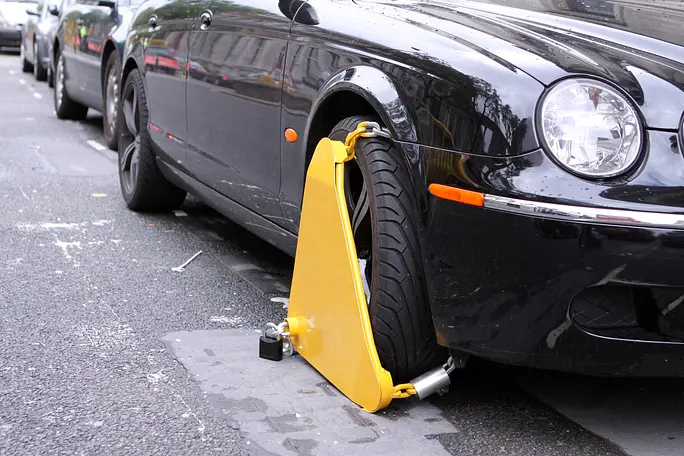This article delves into the essential aspects of avoiding clamping, from maintaining fleet vehicle compliance to utilising comprehensive inspection checklists.
Fleet vehicle compliance: Navigating the clamping conundrum
Fleet vehicle compliance plays a pivotal role in preventing the dreaded scenario of finding your vehicle clamped. For businesses operating a fleet of vehicles, maintaining compliance not only ensures smooth operations but also safeguards against legal troubles and financial losses. The last thing you want is your fleet to be hit with costly vehicle clamps, and the first step towards preventing this is to be well-versed in local parking regulations and restrictions. Ignorance of these rules can lead to accidental violations and, unfortunately, clamping.
A proactive approach involves keeping up with parking permit renewals, monitoring parking zones, and adhering to loading and unloading time restrictions. Regularly educating drivers about these regulations can significantly reduce the chances of clamping incidents.
Investing in modern technologies like GPS tracking systems can provide real-time insights into vehicle locations and enable efficient navigation within the parameters of local laws.
Vehicle document checks: A crucial preventive measure
One of the key components of fleet vehicle compliance is conducting thorough vehicle document checks. Before dispatching any vehicle, it’s important to make sure that all necessary documents are up-to-date and readily accessible. These documents typically include vehicle registration, insurance certificates, and permits specific to commercial operations. Failing to present these documents when required can lead to immediate clamping and hefty fines.
To streamline this process, companies should establish a well-organised document management system. Regular audits can help identify any lapses in document renewal, allowing corrective measures to be taken well in advance. Employing digital document storage and retrieval systems can also expedite the verification process during unexpected spot checks.
Comprehensive inspection checklists: Employee vehicle compliance
While fleet vehicle compliance covers the broader operational aspects, focusing on employee-driven vehicles is equally vital. Many businesses permit employees to use their vehicles for work-related tasks, necessitating the implementation of an employee vehicle inspection checklist. This checklist should encompass crucial elements such as vehicle condition, tyre tread depth, fluid levels, and functioning lights.
Regular inspections not only ensure the safety of employees but also prevent unexpected breakdowns that could lead to clamping. Companies can encourage employees to perform these inspections routinely and offer guidelines on reporting any potential issues promptly. By fostering a culture of vehicle maintenance and responsibility, businesses can significantly reduce the risk of clamping incidents.
Clamping prevention with Safe2Drive
Although avoidable, vehicle clamping has emerged as a challenge for individuals and businesses. Navigating the intricacies of fleet vehicle compliance and adhering to vehicle document checks are key to preventing clamping.
By familiarising drivers with local regulations, maintaining up-to-date documents, and conducting comprehensive vehicle inspections, businesses can minimise the likelihood of clamping incidents.
With Safe2Drive, we’ll perform our DVLA and DVLA NI driving licence verifications with confidence. We conduct comprehensive grey fleet management solutions to guarantee that your drivers’ personal cars fulfil all the legal prerequisites while using them for company purposes.
Reach out to us today to explore how our services can benefit your fleet management endeavours.

